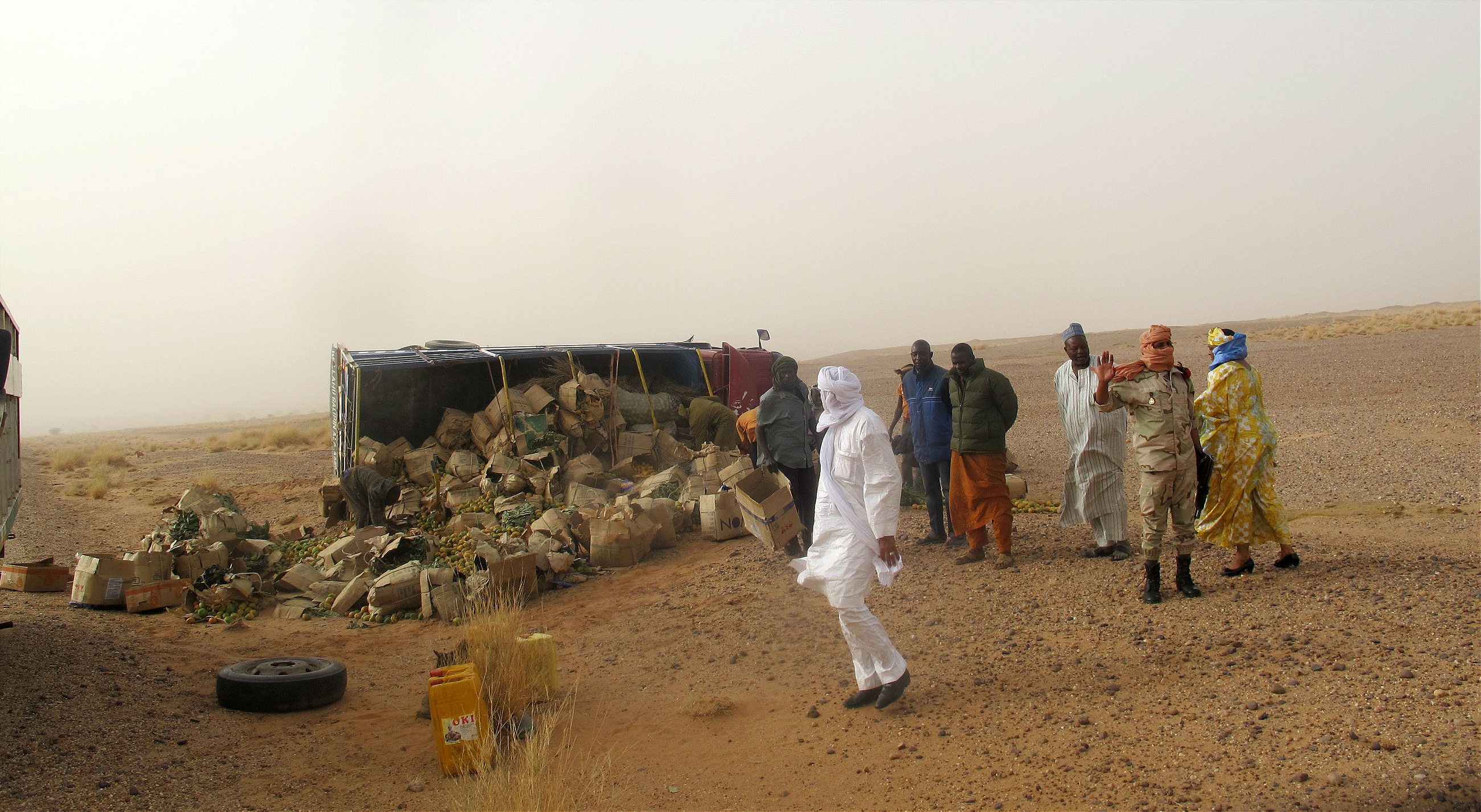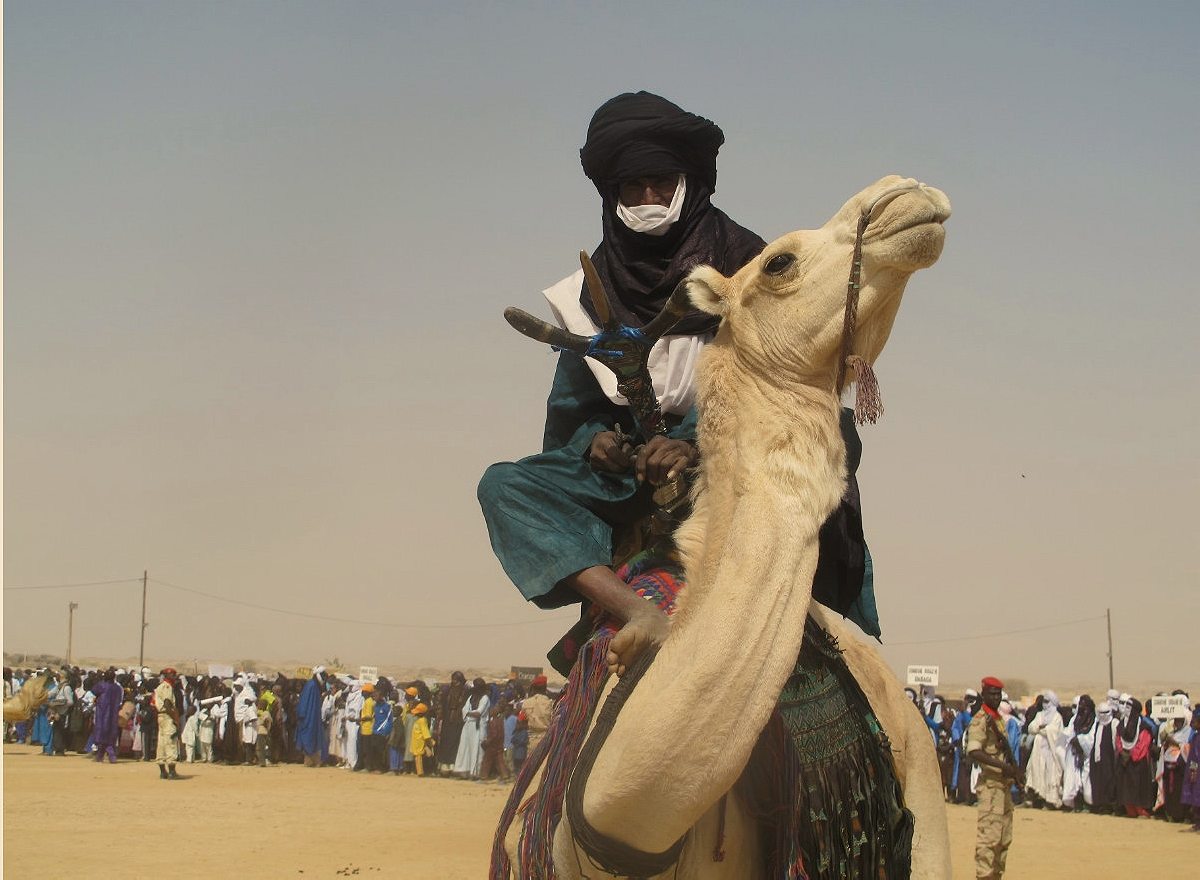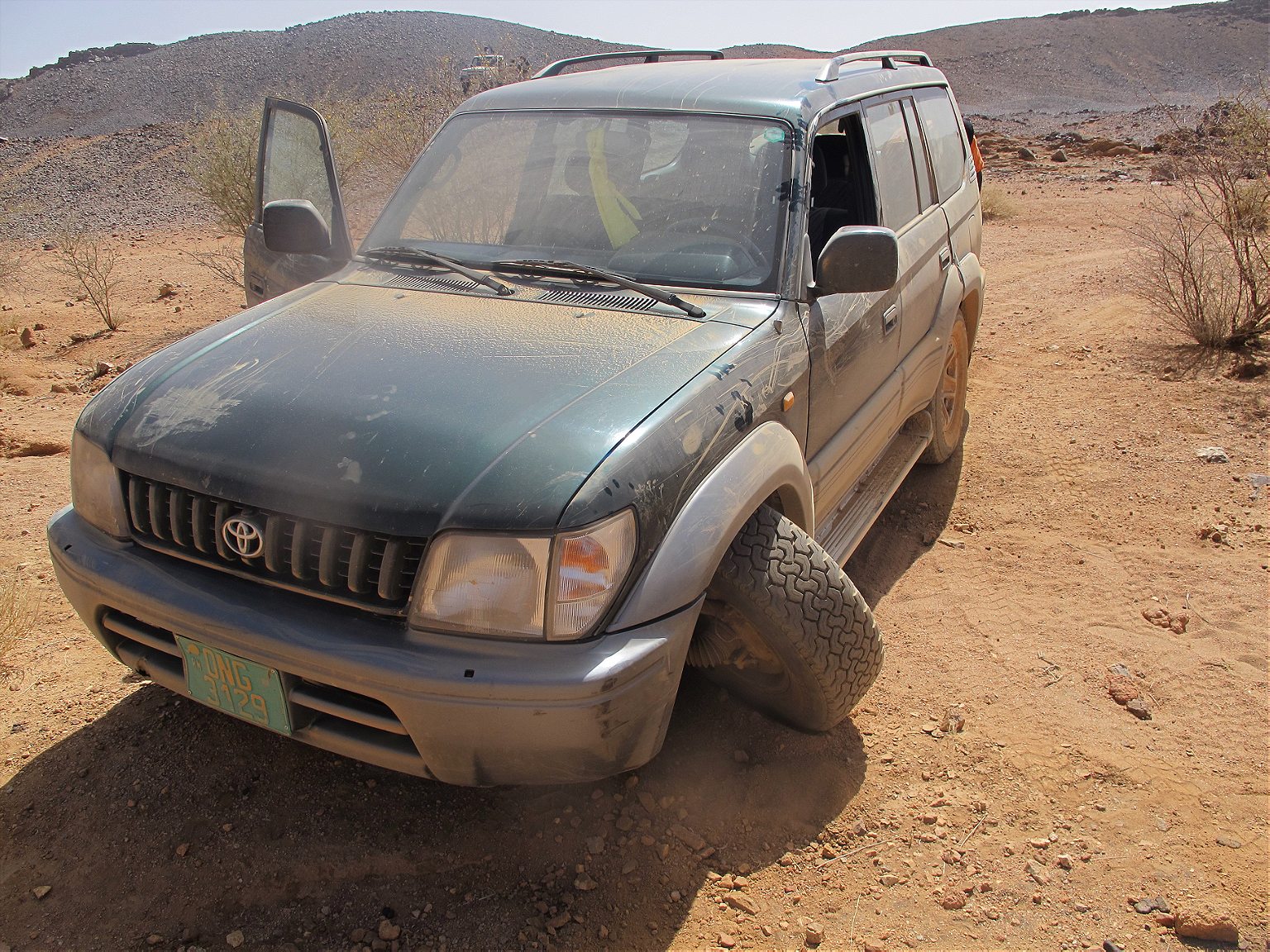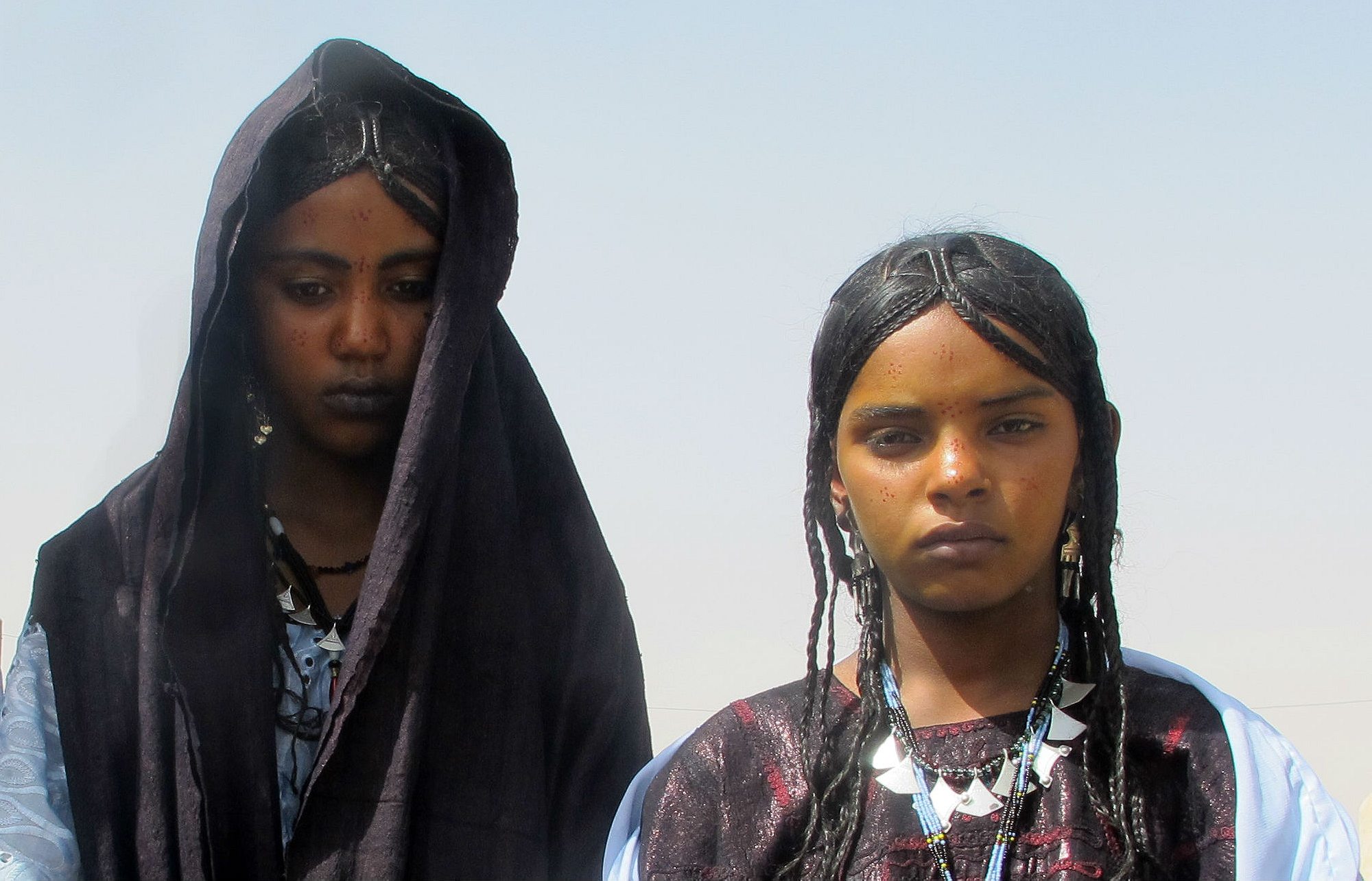Hannah Armstrong braves landmines, uranium wastelands, and something called the “nest of camels” in Niger to make it to the Festival of the Aïr.
The yellowcake road winds from the port city of Cotonou, Benin, deep into the radiant Sahara, slowly disintegrating along the way. By the time trucks reach the mining town of Arlit, where high-grade uranium ore is mined from open pits and then processed into yellowcake, there are more potholes than pavement. The French for potholes is “nests of chickens”; the potholes on the remotest leg of the yellowcake road are so cavernous that locals call them “nests of camels”. Trucks thud along over thorny, sandy Saharan plains at sluggish speeds to deliver dynamite to the mines and return back to the port charged with barrels of yellowcake. Arlit and its mining installations form a hard-to-protect island of industry in the oceanic desert, which was rebel-run territory as recently as five years back. Saharan jihadis have struck at it three times since 2010.
It took two days and twenty hours of driving to cross the 600 miles of dilapidated road between the mining town and Niger’s capital city of Niamey. I rode in a green, mid-1990’s Land Cruiser with a team of southern Nigerien television journalists dispatched to report on the abysmal conditions of working in the open-pit mines and to cover the annual Festival of the Aïr, which celebrates Tuareg culture and tradition. The journalists grew cagey as we penetrated deeper into the northern desert. Sadou, the cameraman, frightened us with tales of Tuareg rebels and evil marabouts. The path cut across dried riverbeds with inclined banks. “This is the most dangerous part,” Sadou would say. “This is where the rebels would always ATTACK!” Thwap, his hand five-finger snapped. The stereo clattered with autotuned Haoussa-language mp3s from Maradi and Zinder. One singer was gangsta rap-style threatening to assault any artist that ripped off his songs. “He caused many divorces,” Sadou said. “Married women would leap over the walls of their houses to come see him sing. That’s why the marabouts prayed for him to die young.” Yards from the road, Tuareg nomads drove donkeys saddled with water bags and paid us no notice.
The LandCruiser slammed along the pitted path, passing burnt and freshly laid automobile carcasses. The uranium road runs parallel to the power lines, a reminder that this is the only state infrastructure for hundreds of miles in either direction. There are mining company airplanes that shuttle in and out the Europeans. Everything else is brought or sent by truck, including the refined uranium ore known as yellowcake. We passed by a broken-down truck filled with dynamite, guarded by a pickup mounted with a 12-7 mitrailleuse and 8 gendarmes. Other trucks bring everything from mangos to camels to food staples from southern Niger—nothing much grows near Arlit beyond the scrub that feeds the nomads’ beasts. Trucks from northern Nigerian cities like Kano and Kaduna bring Chinese-made consumer goods, stacks of cheap plastic chairs spilling out the back, contents stitched together with ropes and net. Transportation of chemical products used in processing and refining uranium is so poor that they spill out onto the road. We saw several little hills of yellow powder that the journalists said was sulfur. A coolant called pyralin is often left lying about—any earth it touches becomes barren for at least fifty years.

Nigerien yellowcake is shipped from Cotonou to France, where it amounts to 40 percent of the global supply of Areva, France’s public nuclear energy company. France derives 75% of its electricity from nuclear energy. But while this is considered “clean” power in Europe, extraction and transportation in Niger have proven disastrous for the environment.
Alhacen Almoustapha, a yellowcake factory mining operator and civil society leader recalls yellowcake spills on at least three occasions in the past 15 years. The first two resulted in yellowcake spilling into the streets. The highly radioactive processed ore, no longer simply transported in drums, is now triple wrapped and sealed before being loaded onto trucks. So when a yellowcake truck upended in 2011 in Tchirozerein, minerals did not escape into the environment.
We spent the night interviewing miners—some are ill from radiation exposure, others were fired for unionizing—and left Arlit early the next morning in a convoy bound for the Aïr massif, where the country’s largest annual Tuareg cultural celebration was about to begin. This time, there were no roads, and the 4x4s and mounted vehicles raced across the desert’s sandy plains and hauled themselves over piles of rock, kicking up monstrous mushroom clouds of dust.

Our destination, the tiny Tuareg oasis town of Iferouane, served as a rear-base for Tuareg rebels seeking political autonomy and shares of uranium receipts in the 1990’s. After that rebellion and another in 2007, the town was not only geographically Niger’s remotest—it was also the country’s most saturated with landmines. Today, with Tuareg leader (and Iferouane native) Brigi Raffini holding the office of Prime Minister, Niger is a regional paradigm of ethnic harmony and integration. If there is one key factor in Niger’s steadfastness while conflicts rage on three of its five borders—southern Libya, northern Mali, and northern Nigeria—it is the Sahelian country’s successful politics of decentralization, which has empowered local actors in far-flung areas. A massive de-mining campaign was launched in the lead-up to the festival, which was seen as a coming-out party to celebrate little, remote Iferouane’s importance on the national scale as a center of Tuareg culture.
The mood grew lighter and the landscapes more beautiful as our convoy of military officers, uranium miners, northern Nigerien elected officials—resplendent in grand boubous despite the crushing heat and clouds of dust—and southern camera crews made its way north from Arlit. There were frequent stops to quick-fix the seething vehicles or take photos of nomad girls with whips and skirts drawing water from wells. Tuaregs need nothing other than a large rock and a few air pumps to quick-fix anything that goes wrong with a four-wheel vehicle. My southern Nigerien co-passengers were not so skilled with the terrain. At around 11:00, we hit a large rock from a bad angle, bending the axle on the front-left tire. They decided to leave the Land Cruiser behind and bundled me into the first convoy vehicle with space for an extra passenger.

Sandwiched between two drunk uranium miners in the back seat of a stripped 1980s Land Cruiser, I struggled to get my bearings. “You live in Arlit?” I asked. “We live in Arlit, work in Arlit, and die in Arlit,” one shouted, as another replied, “Where’s the beer! Traveling without beer is haram.” They produced two cold Bière Nigers from somewhere behind us. They learned I am from Miami and yelled in my ears: “50 Cent!” “Rihanna!” “Ferrari!” Two beers in, both dropped suddenly and at the same time into a slumber so deep that even repeatedly banging their heads into glass windows as we climbed the rocky slope failed to rouse them. The driver, sober, described to me his job recycling and repurposing rainwater that collects in the mine-pits; contaminated, it is used in the treatment and processing of the ore.
By the time we finally arrived, filthy and weighed down by our road-battered bodies, at the idyllic oasis of Iferouane, I was conscious that neither the hapless camera crew nor the drunk miners could be relied on to procure shelter and a bucket-bath. “Guns and no booze,” I thought with weary approval, accepting an invitation into a nimble, air-conditioned Land Cruiser manned by gallant Tuareg ex-rebel customs officials. They commandeered four Tuareg tents near the festival site—baptizing the space “Cite Douaniere” and designating one for me—and then took me shopping for buckets and a sponge. We spent an extremely pleasant evening sipping tea as sheets of stars stretched out above us. I helped one reply to a romantic text in English from his girlfriend, whom he had met a few months back while searching a passenger bus for contraband. She was so beautiful that he asked her to step out and took her phone number. “I miss you my beloved,” she had texted him, flaunting her English. “I miss you too I can’t wait to see your beautiful face” I wrote back for him. She was due to arrive the next day—the customs officer had hired a driver to bring three of his girlfriends in the same vehicle to the festival. Another showed me a picture of his baby “Mujao” who was born on the very day last year that terrorists from the MUJAO (Movement for Oneness and Jihad in West Africa) al Qaeda splinter group attacked the Somair mines at Arlit, damaging them so badly they were forced to close for six months. The customs officials reclined like lords as the teinde beats floated in the air and subordinate artisans plied us with tea. They filled my head with stories of the rebellions, political corruption, customs banditisme, girlfriends, wives, and terrorists, all of which I was too tired to retain.
The Tuareg women of Gougaram were so fleshy and shimmery they drew extra applause.
Rested and fresh the next morning, I visited the de-mining stand at the festival site, speaking with ex-rebels and military who had conducted de-mining operations together. Large light-skinned noble women were shimmering in indigo and dripping with gold. Groups of women pounded on a drum and chanted poems immortalizing the brave deeds of warriors. Land Cruisers and Hiluxes drove onto the field and discharged voluminous turbaned men. During the opening ceremony, each of the communes of the Air massif paraded before a tribune of hosted leaders. There were the Tuaregs of Timia carrying oranges and grapefruits that grow in their Saharan oasis. The Tuareg women of Gougaram were so fleshy and shimmery they drew extra applause. It was announced that there would be camel races and la lutte traditionel—a West African form of nearly-naked wrestling that is the national sport of Niger, although Tuareg men are restricted by modesty from participating. This was peace; this was unity. It might be 104 degrees, the villagers might be made to stand too long in the sun, a number of vehicles might have fallen by the wayside on the perilous approach, but here we were, celebrating not only the beauty of Tuareg culture and land but its centrality to the country and state of Niger.

“Today we have peace. Peace has returned,” Mohamed Anoko, a leader of the ’90’s rebellion, said, before reading a list of what would nevertheless need to be done so as to consolidate and preserve this peace. First on the list was fixing the roads. The opening ceremony speeches dragged on as the sun climbed higher. A loud explosion suddenly rang out and the tribune, the speakers, and the crowd fell queasily silent. Mounted military pick-ups with special forces raced off in the direction of the boom. A pick-up, we later learned, had hit a landmine. Officially, it was left over from the old rebellion, although some well-placed security officials privately wondered if it hadn’t been freshly placed. The festival proceeded joyfully and with thousands in attendance, but some said a shadow had been cast.